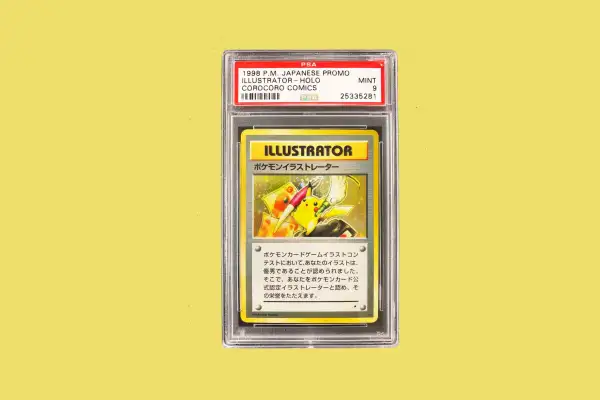Someone Spent $225,000 on One Pokemon Card From 1998

Forget Beanie Babies — your childhood collection of Pokémon cards might be where the real money is.
A 1998 Pikachu card set a global record last week when it was auctioned off for $224,250, according to gaming news site Kotaku. In a Facebook post after the sale, Weiss Auctions declared it "the most valuable and rarest Pokémon card in the world." The buyer's identity has not been made public.
The item in question is a Pikachu Illustrator card, which was produced in the '90s for the winners of the CoroCoro Comic Illustration Contest in Japan. There were just 39 copies of the card given out as prizes, and only 10 are said to be authenticated.
The promotional card features a drawing of the iconic yellow Pokémon surrounded by art supplies. Illustrated by designer Atsuko Nishida, the card also includes a message for the beholder: "We certify that your illustration is an excellent entry in the Pokémon Card Game Illustration Contest. Therefore, we state that you are an officially authorized Pokémon card illustrator and admire your skill."
The Pikachu Illustrator card sold this month might have taken the "most expensive" title, but it's not the first to ever hit the market. In 2016, CNBC reported that Heritage Auctions sold a Pikachu Illustrator for $54,970 — a price the auction house said had been driven up by the popularity of Pokémon Go. Other cards have also pulled in big profits: A Charizard sold for $11,999 in 2016, and a full first-edition set went for almost $100,000 in 2017. A 1998 Magikarp card is currently available on eBay for $34,995.
Pokémon cards are rising in value over time, but they're not all created equal. If you're checking your old binders for collectibles, Heritage Auctions says to look for first-edition cards, which have a special mark on the left side; shadowless cards, where the border around the illustration is flush against the background; and error cards, which are misprinted.
Go forth and catch 'em all.
